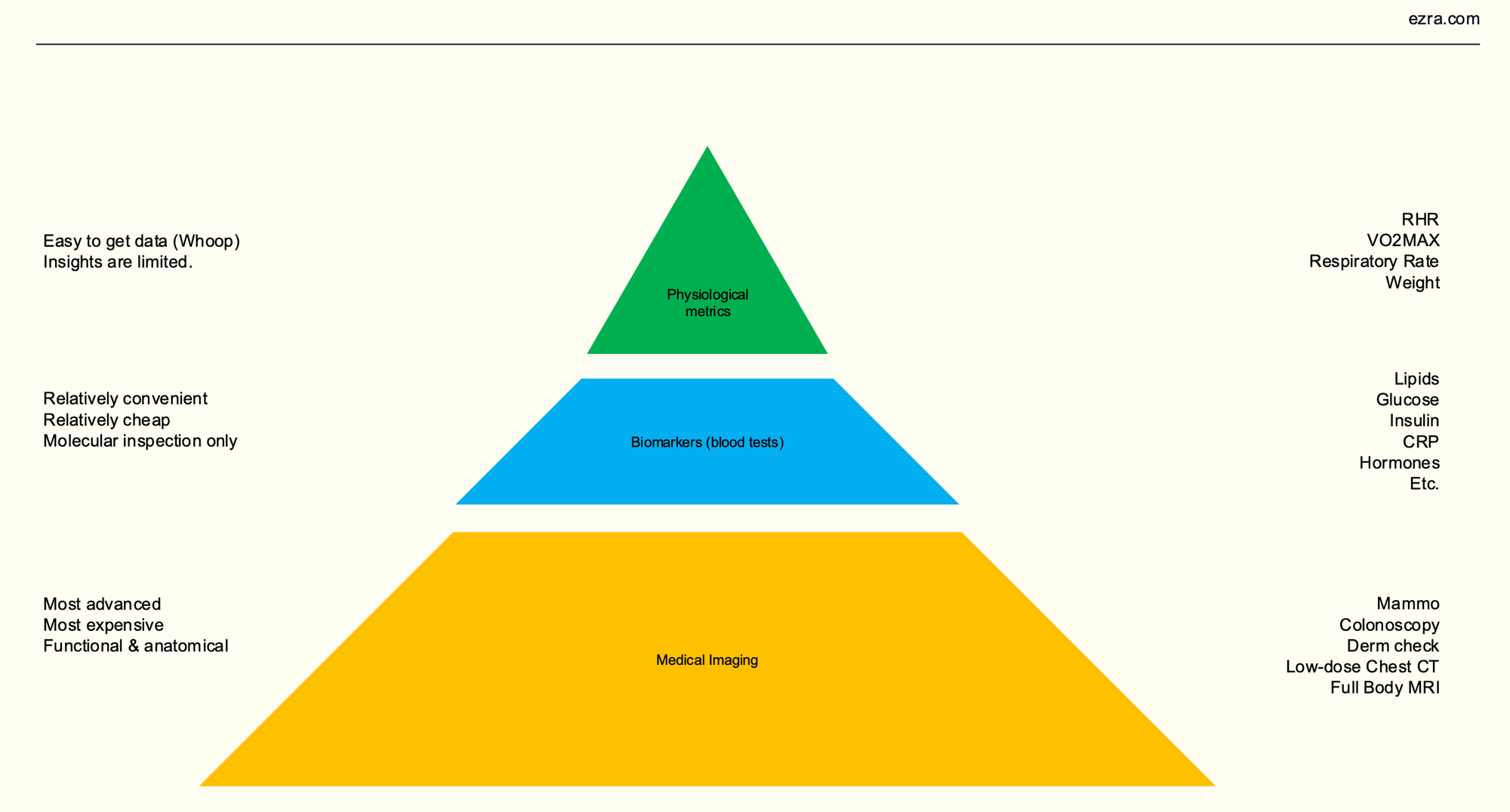The health dataset of the future
A couple of days ago I gave a presentation at Bryan Johnson’s Don’t Die Summit in San Francisco, talking about the health dataset of the future. I’ve since gotten countless emails from people asking for the slides, so I decided to make them public. The slides alone would not be be that useful without context, so I’ve also written a short summary of the presentation below.
Why we die
If we go back to the 1800s, the average global life expectancy was just 32 years. By the 1950s, it had increased to 62 years, and today, in the 2020s, it stands at about 80 years. This means we’ve increased the average lifespan by 2.5 times in just the past century—a remarkable achievement of human ingenuity. But how did we get here?
Up until the 1950s, most deaths across all age groups were caused by infectious diseases like tuberculosis and pneumonia. We largely overcame these challenges thanks to improvements in hygiene, access to clean water, and the development of vaccines and antibiotics.
Since the 1950s, the leading causes of disease-related deaths have shifted to chronic illnesses like cancer, heart disease, and dementia.
Cancer, heart disease, dementia
The good news about today’s three leading causes of death is that we can take action against them. Cancer is very curable when detected early. Heart disease is fully preventable. And dementia can be delayed if risk factors are identified early enough. The key to reducing the lethality of these diseases lies in data. That is why the title of my presentation is The Health Dataset of the Future.
The health data pyramid
I think of health data as a pyramid. At the top, we have physiological metrics like resting heart rate (RHR), VO2 max, respiratory rate, weight, and more. These are metrics you can easily track with devices like an Apple Watch or a Whoop. While they are useful, their scope is limited—there's only so much you can do with RHR data alone.
Moving to the middle of the pyramid, we have biomarkers collected through blood tests, such as lipids, glucose, insulin, CRP, hormones, and more. These markers are relatively easy to obtain, affordable, and very informative. However, blood tests only provide a snapshot at the molecular level, so they don't give a full picture of what’s happening inside the body.
At the base of the pyramid is medical imaging, including mammograms, colonoscopies, CT scans, and, of course, MRIs. As I’ve detailed in my Longevity Protocol, I believe a full-body MRI is the most advanced tool available for gaining a comprehensive understanding of what's happening inside the body.

Increasing health span
Returning to the question of why we die: cancer, heart disease, and dementia are the leading causes of death today. Each of these diseases reduces the average lifespan by 3 to 5 years.
Solving cancer, heart disease, and dementia could conservatively add 10 years to the average lifespan. In countries where life expectancy is already in the mid-80s, this would bring many people close to becoming centenarians.
The key to solving these diseases is early detection. And the key to early detection is data—specifically imaging, with MRI being one of the best tool we have. This is why I’m so passionate about the work we’re doing at Ezra and why I believe everyone should have access to a full-body MRI.
Slides below.


